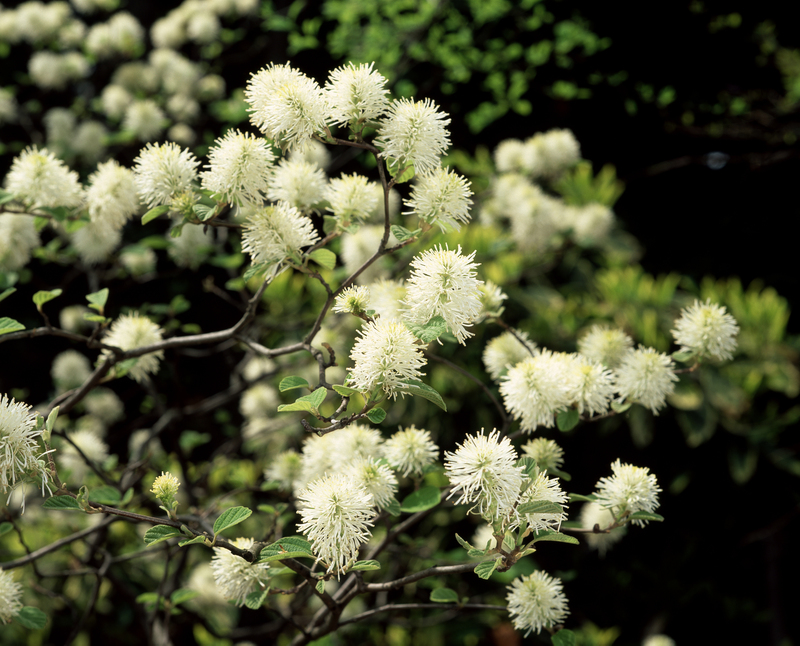Optimizing your garden's resilience against strong winds
Posted on 14/08/2025
Optimizing Your Garden's Resilience Against Strong Winds: Essential Strategies and Tips
Strong winds can threaten the beauty, health, and productivity of your garden. Optimizing your garden's resilience against strong winds is crucial for any gardener looking to protect their plants and landscape investments. In this guide, we cover in-depth strategies to make your garden wind-resistant, from planting choices to structural solutions. Read on to learn how to create a sanctuary that thrives in windy conditions.
Understanding Wind Challenges in the Garden
Before delving into solutions, it's important to grasp how strong winds impact gardens. Wind can:
- Bend, break, or uproot fragile plants
- Increase water loss through transpiration
- Accelerate soil erosion
- Damage or dry out foliage
- Disrupt pollination and fruit set

Assessing Your Site: The First Step to Wind-Resilient Gardening
Every garden is unique. Begin by observing and mapping wind patterns around your property:
- Identify prevailing wind directions: Usually from the west or northwest in temperate regions.
- Watch for wind tunnels: Gaps between buildings or open driveways may increase wind speed.
- Note existing shelter: Fences, hedges, or natural land features like hills or woodlands.
- Pinpoint vulnerable spots: Areas where plants have suffered damage previously.
Windbreaks: The Cornerstone of Windproof Garden Design
What is a Windbreak?
A windbreak is a structure--natural or constructed--that reduces wind speed, protecting plants behind it. Windbreaks are central to optimizing your garden's resilience against strong winds. They decrease wind velocity, lower evaporative stress for plants, and can even create warmer microclimates for sensitive species.
Types of Windbreaks
- Living Windbreaks: Rows of dense shrubs, hedges, or trees grow over time and offer ecological benefits--habitat, beauty, and noise reduction.
- Artificial Windbreaks: Fences (wood, metal, or fabric), trellises, or purpose-built screens provide instant but often less natural-looking protection.
How to Design Effective Windbreaks
-
Permeability is key
Solid barriers create turbulence. Instead, choose structures that slow wind, such as latticed fences or staggered plantings. The ideal windbreak lets some wind filter through--about 30% permeable--for maximum protection. -
Height matters
The taller your windbreak, the larger its "shadow zone" of reduced wind. As a rule, it protects a distance of 5-10 times its height downwind. -
Plant in layers
Combine trees, tall shrubs, and lower bushes to create multi-tiered living windbreaks for optimal wind protection and habitat diversity. -
Position your windbreak wisely
Install windbreaks perpendicular to prevailing winds, prioritizing the most vulnerable areas of your garden.
Great Windbreak Plants for Wind-Resilient Gardens
Choosing the right species is crucial when optimizing your garden's resilience against wind:
- Evergreen Trees: Pines, spruces, yews, cypresses--stay leafy in winter when protection is most needed.
- Deciduous Trees & Shrubs: Hawthorn, rowan, willow, hornbeam, privet, hazel--dense branching intercepts wind year-round.
- Native Hedging: Blackthorn, dogwood, elderberry, holly--wildlife-friendly and well-suited to local climates.
Choosing and Positioning Plants for Wind Resistance
Wind-Tolerant Plants to Optimize Garden Resilience
Some plants naturally withstand wind better than others. Select:
- Flexible Stems: Grasses, bamboos, willow, dogwood--bend instead of breaking.
- Low-Growing Forms: Lavender, juniper, thyme, rosemary--hug the ground and avoid gust exposure.
- Strong Root Systems: Dwarf conifers, oaks, poplars--anchor firmly and resist uprooting.
- Glossy or Waxy Leaves: Euonymus, laurel, pittosporum--minimize windburn and dehydration.
Proper Plant Placement
Don't place fragile or tall plants in windy, exposed spots. Arrange vulnerable species behind windbreaks or close to buildings, where winds are less severe. Grouping plants together also helps shield them from damage.
Structural Solutions: Garden Fences, Screens, and Barriers
Best Fences for Windy Gardens
- Lattice or slatted fences: Allow some airflow while deflecting the brunt of strong gusts.
- Reed, willow, or brushwood panels: Blend into natural settings and offer semi-permeable protection.
- Hurdle fencing: Traditional and eco-friendly; works well in cottage or rustic gardens.
DIY Wind Screens and Temporary Barriers
For young trees or seasonal protection, try these wind-resistant structures:
- Burlap wraps: Shield delicate plants during strong wind events or winter gales.
- Garden netting or fleece: Deflect light breezes while preventing windburn on flowers and soft fruit.
- Temporary plastic screens: Useful for vegetable beds or greenhouses in exposed plots.
Soil and Mulch Management: Anchoring Your Plants
Optimizing your garden's wind resilience isn't just about blocking the wind--it's also about making sure your plants can hold their ground.
- Improve soil structure & drainage: Well-rooted plants in healthy, organic-rich soil are less likely to be toppled by winds.
- Apply mulch generously: Mulch reduces soil erosion and helps trap moisture, countering the drying effects of strong winds.
- Interplant groundcovers: Low, spreading plants like creeping thyme or clover blanket soil, protecting it from being scoured away.
Garden Design Practices to Minimize Wind Damage
Terracing and Raised Beds
- Terraces break up wind flow on sloped landscapes, slowing speed and reducing erosion.
- Raised beds offer better drainage and warmer microclimates--both beneficial in exposed spots.
Plant Layering and Companion Planting
- Layering (or "shelter planting") means arranging tall, medium, and low plants in sequence to create successive wind barriers.
- Companion planting (e.g., sunflowers shielding beans, corn protecting squash) can provide natural wind-breaking functions within crop beds.
Strategic Structures
- Garden walls, sheds, and pergolas can break up or redirect wind, providing additional protected pockets for delicate plants.
Caring for Plants in Wind-Exposed Gardens
Even the best-protected gardens must be properly maintained to thrive in windy conditions. Optimize your garden's wind resistance with these care tips:
- Regular staking of young trees: Prevent wind-rock and encourage upright growth. Remove supports once roots establish.
- Prune correctly: Open, well-shaped crowns allow wind to pass through trees and shrubs, reducing breakage risk.
- Monitor soil moisture: Wind dries soil quickly. Water deeply and mulch well, especially in dry or sandy gardens.
- Inspect and repair windbreaks and fences regularly to maintain their effectiveness.
Urban and Coastal Wind Solutions
Certain locations, such as urban rooftops or coastal properties, are particularly wind-exposed. Here are targeted ideas to optimize wind resistance in these challenging environments:
- For balconies and rooftops: Use lightweight, moveable containers; group pots together to create wind shelter; anchor planters securely.
- For coastal gardens: Select salt-tolerant, flexible plants; create layered windbreaks using native species; install shade cloth or mesh screens in vulnerable planting zones.

Common Mistakes That Undermine Garden Wind Resistance
- Solid fences without gaps--these often increase turbulence and can blow over in strong winds.
- Planting tender or top-heavy plants in exposed areas without protection.
- Neglecting regular maintenance--fallen branches, unpruned shrubs, or broken fences quickly reduce a garden's wind defense.
Summary: How to Optimize Your Garden's Wind Resilience
Optimizing your garden's resilience against strong winds is all about planning, thoughtful design, and ongoing care. Remember these key strategies:
- Implement permeable windbreaks or living hedges for year-round shelter.
- Select wind- and salt-tolerant plants--the right choices make all the difference in exposed settings.
- Strengthen your soil with mulch and cover crops to anchor roots.
- Incorporate clever garden layout ideas, such as terracing, layered planting, and wind-friendly structures.
- Keep up with maintenance--staked trees, repaired fences, and pruned shrubs withstand windy weather better.

